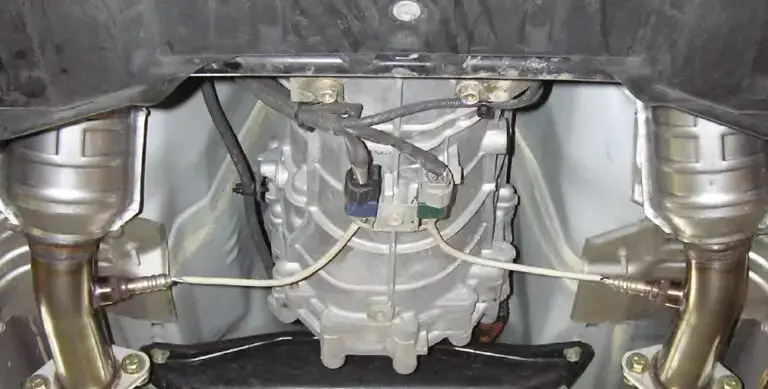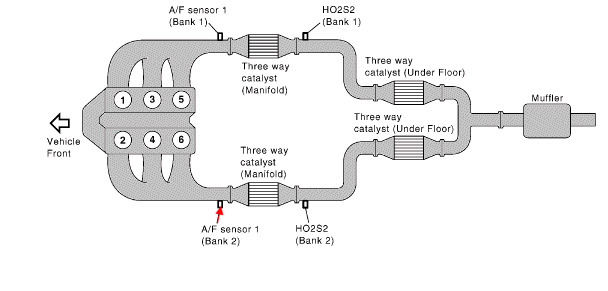P1168 Nissan Code: Discover Meaning, Causes & Simple Repair Steps
If you’re a Nissan owner encountering the P1168 code, you’re probably looking for answers. Don’t worry—I’m here to help!
Before you go ahead and replace the O2 sensor right away, let’s take a step back. It’s important to understand the root cause of the issue before jumping to any conclusions.
In this article, my goal is to guide you through the ins and outs of the P1168 code. Together, we’ll explore what’s going on behind the scenes. Plus, I’ll provide you with practical tips to diagnose and fix the problem.
So, let’s dive right in and get to the bottom of the P1168 Nissan code!
P1168 Nissan: A Quick Overview
Check out the handy summary box below for a quick overview of the P1168 Nissan Code!
- Definition: Closed Loop Control Function Bank 2
- Severity: Medium
- DIY Skill Level: Intermediate
- Continue To Drive?: Yes
- Estimated Repair Cost: $50 – $100
What Does The P1168 Code Mean On Nissan?
The P1168 code found in Nissan vehicles indicates a potential problem within the Air Fuel Ratio (A/F) sensor or Heated Oxygen Sensor (HO2S) circuit. When the engine control module (ECM) detects that the closed-loop control function for bank 2 fails to operate, even under the specified conditions while driving, this code is triggered. This code is mostly common in Nissan Titan, Xterra, Murano, Pathfinder, and Nissan Maxima vehicles.
The A/F sensor, or HO2S, is a critical component in the fuel system as it measures the oxygen content in the exhaust gases. This information helps the ECM adjust the air-fuel mixture for optimal combustion efficiency. Therefore, encountering the P1168 code suggests a fault with the A/F sensor or its circuitry.

(Image credit: My350z.com forum)
In a closed-loop condition, the ECM continuously monitors sensors to make real-time adjustments to fuel delivery. A closed-loop fault indicates an issue with the A/F sensor or HO2S circuit, disrupting the closed-loop control process.
Additionally, it’s worth noting that the P1168 code may be accompanied by other codes like P0501 (related to the vehicle speed sensor) and P1286 (related to the engine coolant temperature sensor). These additional codes suggest potential issues with the oxygen sensor system and engine coolant temperature regulation, impacting fuel delivery and engine performance.
Is The P1168 Nissan Code Severe?
The severity level of the P1168 Nissan code can be considered moderate. Although it signifies an issue with the A/F sensor or HO2S circuit, it does not imply immediate danger or render the vehicle undrivable.
Some of you might come across several forum discussions suggesting that the P1168 code is not a big deal and you can keep driving without any worries. They even state that the P1168 code only indicates that your Nissan’s catalytic converters might be operating more efficiently than stock, reducing the risk of blowback into the engine. Moreover, there’s an opinion that you shouldn’t worry about this code if you live in a non-emissions county.
However, let me offer you some friendly advice from a mechanic’s perspective. While you’re good to go (for A LITTLE WHILE) with the P1168 code, it’s still a good idea to address the issue sooner rather than later.
While driving with this code won’t pose immediate risks, you may experience decreased fuel efficiency and potential impacts on your vehicle’s performance. To avoid further complications, it’s best to diagnose and repair the issue as soon as possible. Taking proactive measures will prevent more severe issues from arising down the road.
What Are The Warning Signs Of The P1168 Nissan Code?
Beware of these telltale signs that could point to the presence of the P1168 Nissan code:
- Check Engine Light (CEL) illuminated
- Reduced engine performance
- Poor fuel efficiency
- Rough idle
- Abnormal exhaust emissions
- Service Engine Soon (SES) light illuminated (in some cases)
Read more: Nissan Dashboard Warning Lights and Meanings (FULL list, FREE Download)
What Causes The P1168 Nissan Code?
Here are some potential causes of the P1168 Nissan code:
- Open or shorted circuit in the heated oxygen sensor 1 bank 2
- Malfunctioning heated oxygen sensor 1 bank 2
- Faulty heated oxygen sensor 1 heater bank 2
How To Diagnose And Fix The P1168 Nissan Code
In this section, we’ll walk you through the steps to effectively troubleshoot and resolve the P1168 Nissan code. Let’s get started on getting your Nissan back on the road with confidence.
Essential Tools And Parts
- A/F sensor for bank 2
- Sensor gasket or seal
- Electrical connectors
- Wire connectors
- Wrench set
- Wire cutters
- Electrical tape
- Electrical cleaner
- Jack and jack stands
Step-by-step Procedure
Step 1: Get access to the A/F sensor. It is often located before the Catalytic Converter on Bank 2. You can access it conveniently through the driver’s side wheel well.

 Check this diagram to locate your Nissan’s A/F sensor 1 bank 2.
Check this diagram to locate your Nissan’s A/F sensor 1 bank 2.(Image credit: justanswer.com)
Step 2: Take a close look at the sensor’s electrical connector and wiring harness. Look for any signs of loose, broken, or damaged wires. Ensure that the connector is securely plugged in.
Step 3: Locate the ground wire, usually black in color, and trace it to its connection point on the vehicle’s chassis or engine. Make sure it is firmly attached without any corrosion or looseness. If needed, clean the connection and reattach the wire securely.
Step 4: Use a multimeter to test the wiring for any issues to ensure there is no discontinuity or abnormal resistance.
Step 5: If the above checks do not reveal any issues and the problem persists, it may be necessary to replace the sensor.
Start by unplugging the electrical connector from the sensor.
Then, carefully unscrew the sensor from the exhaust pipe using an appropriate wrench or socket.
Take note of the sensor’s orientation and the number of wire connectors for the replacement process.
Step 6: Clear the error codes and perform a test drive to verify if the issue has been resolved.
Note: Choose a trusted manufacturer for your replacement O2 sensor to ensure quality and compatibility. Bosch products are known for their quality and compatibility, making them a reliable choice.
Tips: I have a helpful tip for working with A/F sensors! It’s all about using anti-seize, which is a special lubricating compound that helps prevent seizing or sticking of threaded components. Here are some tips for using anti-seize effectively:
- Use a bit of anti-seize on the threads, but keep it off the sensor.
- Choose anti-seize specifically formulated for O2 sensor temperatures.
- Look for included anti-seize tubes in a reputable brand’s packaging (e.g., Bosch, Denso).
- Check if store brand options include anti-seize (e.g., Duralast). If not, purchase a suitable product separately.
Estimated Repair Costs For P1168 Code In Nissan Vehicles
Diagnosing and repairing the P1168 code in Nissan vehicles can be approached as a DIY project, but it does require some automotive knowledge and skills. Accessing the A/F Sensor and inspecting the wiring and grounding are relatively straightforward while replacing the O2 sensor, if necessary, requires more skill and knowledge.
It’s recommended to assess your comfort level and consider seeking professional help if needed. This approach can help ensure that the P1168 code is addressed effectively and avoid unnecessary expenses.
Here’s a general overview of estimated costs for labor and main repair tasks. Please remember that these figures are approximate and can vary based on factors like location and vehicle model.
| Repair Task | Estimated Cost |
| Diagnostic Fee | $50 – $150 |
| Wiring and Harness | $50 – $300 |
| A/F Sensor | $70 – $300+ |
| A/F Sensor Replacement (Labor cost) | $75 – $150 per hour |
P1168 Nissan Infographic

Final Thoughts
In conclusion, diagnosing and fixing the P1168 Nissan code can be a rewarding DIY project. If you have the know-how and confidence, go for it! Remember to prioritize safety and use the right tools.
If you prefer extra support or lack the necessary skills, don’t hesitate to bring in a professional mechanic. They’ll help you get your Nissan running smoothly again.
Whether you choose the DIY route or seek professional assistance, the goal is to resolve the P1168 code and ensure your Nissan is in top shape.
Ready to take on the challenge? Get your hands dirty and enjoy the satisfaction of a job well done!
Feel free to ask if you need more advice or have questions along the way. Best of luck with your P1168 code repair!
References Sources
- JustAnswer, What does a closed loop control fault mean (P1168)? – Answer by Nissan Expert Ron Z.
- Tire Review Magazine, 2011 May 6, Fuel System Definitions and Diagnostic Trouble Codes.
